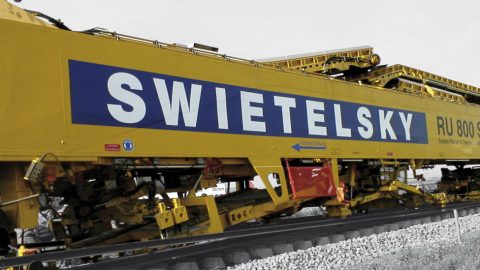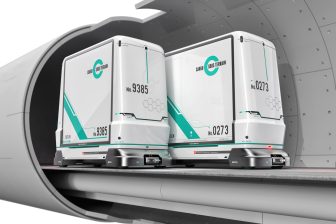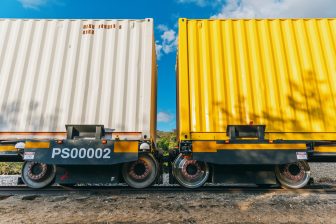
Railway upgrades should be done by machines, not humans
They are like moving factories: machines capable of renewing a railway track autonomously, and without nearby line closures. They are the approach to efficient railway upgrading, but they are not yet widely applied. What is stopping us?
Niek Lentink, Director Operations at Swietelsky Rail Benelux has been asking this question for the last few years. In other industries, machines such as these are already common practice and in some countries, also railways are upgraded in this manner. But if you ask Lentink, the concept should be applied everywhere. He will present the technique in a workshop on 28 March at the Freight & Terminal Forum.
The machines
“The rail machines to work in this way already exist”, he starts off. “These moving factories with conveyor belt systems” are near to the perfection of the modern factory hall.” Swietelsky is a construction company that has put some machines of this kind on the market. Examples are the RU800S and the new RUS1000S.
“These machines are capable of renewing the entire track (ballast, sleepers and rails) in one corridor. The RUS1000S can even directly restore the track geometry in the same renewal run.” The workstations are attached to the track they are repairing and have their own materials and tools. The work is carried out autonomously.
Less risks
According to Lentink, this way of working has two main advantages. First, the nearby railway line does not need to be closed for safety purposes, allowing for minimal disturbance during construction work. “The parallel track remains available for travelers and goods. With a mix of the latest high-tech warning equipment and physical shielding, the risk of collisions by trains on the collateral track is mitigated.”
Secondly, the machine contributes to better working conditions in the railway industry. Construction works are often carried out in weekends and holiday periods. “We work out of service, where we often carry out various activities in 52 hours to meet the Monday morning deadline again. This includes lots of night work, irregular working hours and moving along long sections of track with difficult accessibility. Due to such factors, scarcity of well-trained personnel is an obvious problem.”
Assembly line
Lentink compares the concept to the introduction of the assembly line, which was a true revolution for factory work. “Driven by efficiency and margin improvement, production time decreased from 12 hours to 93 minutes by moving a car at a certain speed (flow) through the factory from fixed workstation to workstation”, he says referring to the Ford factory.
“How nice would it be if we could translate these proven benefits to the physical construction site on the track? This is clearly not the ideal basis for working safely. Unfortunately, the number of incidents in our industry confirms this. If we really have the ambition in the rail sector to plan sustainably, to put customer nuisance first and to reward innovation, nothing should stop us from using these machines.”
Workshop
Are you interested in this workshop or would you like to join the discussion? Registration is free of charge. You must first register for the Freight & Terminal Forum, Expo only. Then, you visit the workshop programme and select the workshop of your choice.
Date: 28 March 2019
Time: 14:15 – 15:00





